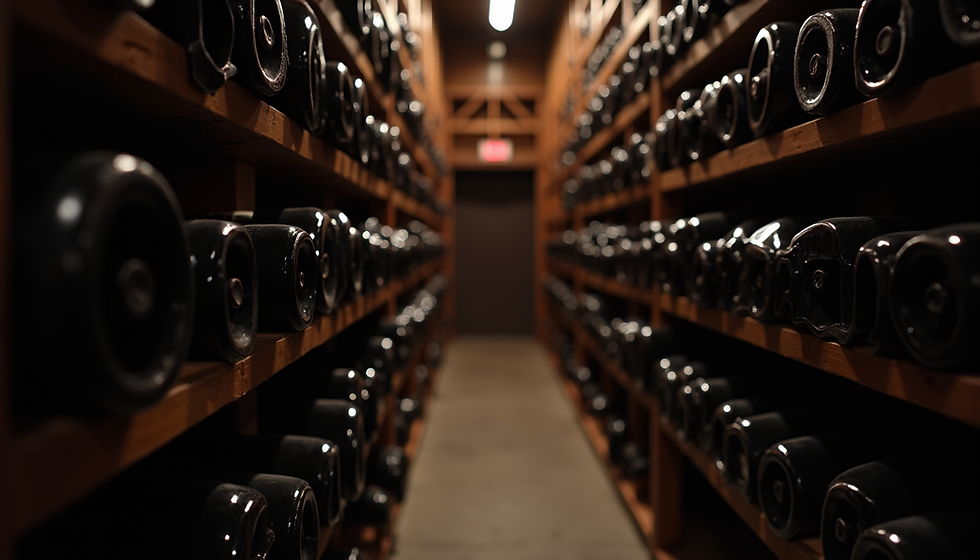The Appeal of Small Batch Mead Production
- Elysium Meadery

- Sep 22
- 3 min read
Mead, often called the "nectar of the gods," is one of the oldest known alcoholic beverages. Made from fermented honey, water, and sometimes fruits or spices, mead has been enjoyed for centuries. In recent years, there has been a growing interest in small batch mead production. This approach offers unique benefits that appeal to both producers and consumers alike. Let’s explore why small batch mead is gaining popularity and what makes it so special.
Why Choose Small Batch Mead Production?
Small batch mead production focuses on crafting limited quantities of mead with great attention to detail. This method contrasts with large-scale commercial production, where consistency and volume are prioritized. Here are some reasons why small batch mead is appealing:
Quality Control: Producing mead in smaller quantities allows makers to closely monitor every step of the fermentation process. This results in a higher quality product with fewer defects.
Experimentation: Small batches provide the flexibility to try new recipes, ingredients, and techniques without risking large amounts of product.
Artisanal Craftsmanship: Each batch can be tailored to express unique flavors and characteristics, reflecting the maker’s creativity and passion.
Sustainability: Smaller production runs often mean less waste and a smaller environmental footprint.
Community Connection: Small batch producers often engage directly with their customers, creating a sense of community and shared appreciation for the craft.
These factors combine to make small batch mead a favorite among enthusiasts who value authenticity and flavor diversity.

The Benefits of Small Batch Mead for Enthusiasts and Producers
For mead lovers, small batch production means access to unique and limited-edition flavors that are not available in mass-produced varieties. Producers benefit from the ability to:
Control Ingredients: Using high-quality, locally sourced honey and fresh fruits or spices enhances the final product.
Maintain Freshness: Smaller quantities can be bottled and distributed faster, preserving the mead’s vibrant flavors.
Build Brand Identity: Crafting distinctive batches helps producers stand out in a growing market.
Receive Feedback: Direct interaction with customers allows for quick adjustments and improvements.
For example, a meadery might create a small batch infused with rare berries or exotic spices, offering a one-of-a-kind tasting experience. This approach encourages innovation and keeps the craft exciting.

What size batch for mead?
Determining the right batch size depends on several factors including production goals, available space, and equipment. Common batch sizes for small scale mead production range from 1 gallon (3.8 liters) to 5 gallons (19 liters). Here’s a breakdown:
1 Gallon Batches
Ideal for hobbyists and experimental brewers. These small batches allow for testing new recipes without a large investment in ingredients or time.
3 to 5 Gallon Batches
Suitable for small commercial operations or serious home brewers. This size balances manageable production with enough volume to share or sell.
Larger Batches
While still considered small compared to industrial scale, batches of 10 gallons or more require more equipment and space but can meet growing demand.
Choosing the right size also depends on how much time you can dedicate to monitoring and adjusting the fermentation process. Smaller batches require more hands-on attention but offer greater control.

Tips for Successful Small Batch Mead Production
To make the most of small batch mead production, consider these practical tips:
Start with Quality Honey: The flavor of your mead depends heavily on the honey used. Choose raw, unfiltered honey from trusted sources.
Sanitize Thoroughly: Cleanliness is crucial to prevent contamination and off-flavors.
Monitor Fermentation Closely: Use hydrometers and thermometers to track progress and maintain ideal conditions.
Experiment with Ingredients: Add fruits, spices, or herbs in small amounts to create unique flavor profiles.
Be Patient: Mead often requires longer aging times than other alcoholic beverages. Allow your batches to mature for the best taste.
Keep Detailed Records: Document your recipes, fermentation times, and outcomes to refine your process over time.
By following these guidelines, producers can maximize the quality and uniqueness of their small batch mead.
The Future of Small Batch Mead Production
As interest in craft beverages continues to grow, small batch mead production is poised to expand. Consumers are increasingly seeking artisanal products with authentic stories and distinctive flavors. This trend supports local producers and encourages sustainable practices.
Innovations in fermentation technology and ingredient sourcing will also enhance the possibilities for small batch mead makers. Collaborations between meaderies and local farmers or foragers can introduce new flavors and strengthen community ties.
For those interested in exploring or starting their own small batch mead journey, resources and communities are more accessible than ever. Whether you are a hobbyist or a budding entrepreneur, the appeal of small batch mead lies in its blend of tradition, creativity, and quality.
Explore more about small batch mead and discover how this ancient craft is being revitalized today.




Comments